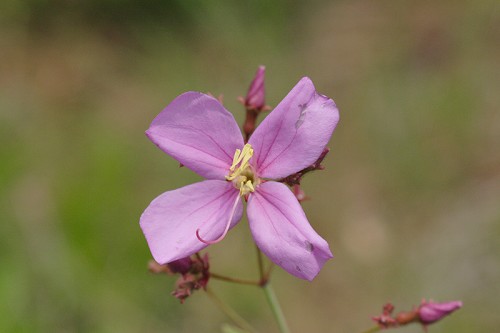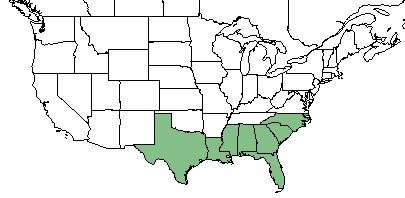Difference between revisions of "Rhexia alifanus"
(→Pollination) |
|||
| Line 52: | Line 52: | ||
<!--==Diseases and parasites==--> | <!--==Diseases and parasites==--> | ||
| − | ==Conservation and | + | ==Conservation, cultivation, and restoration== |
| − | == | + | ==Cultural use== |
==Photo Gallery== | ==Photo Gallery== | ||
<gallery widths=180px> | <gallery widths=180px> | ||
</gallery> | </gallery> | ||
==References and notes== | ==References and notes== | ||
Revision as of 18:31, 8 June 2021
| Rhexia alifanus | |
|---|---|

| |
| Photo by John Gwaltney hosted at Southeastern Flora.com | |
| Scientific classification | |
| Kingdom: | Plantae |
| Division: | Magnoliophyta - Flowering plants |
| Class: | Magnoliopsida - Dicots |
| Order: | Myrtales |
| Family: | Melastomataceae |
| Genus: | Rhexia |
| Species: | R. alifanus |
| Binomial name | |
| Rhexia alifanus Walter | |

| |
| Natural range of Rhexia alifanus from USDA NRCS Plants Database. | |
Contents
Taxonomic Notes
Synonym: none
Variety: none
Description
R. alifanus is a perennial forb/herb of the Melastomataceae family that is native to North America.[1]
Distribution
R. alifanus is found in the southeastern United States; specifically in Florida, Georgia, South Carolina, North Carolina, Alabama, Louisiana, Mississippi, and Texas.[1]
Ecology
Habitat
R. alifanus is typically found in pine flatwoods, savannas, and pocosin borders.[2] It does not respond to soil disturbance by clearcutting and chopping in North Florida flatwoods forests.[3]
Transitions between uplands and lowlands, commonly wet praire, is another common habitat to find R. alifanus.[4]
Rhexia alifanus is frequent and abundant in the Upper Panhandle Savannas and Panhandle Seepage Savannas community type. It is an indicator species for the Lower Panhandle Savannas community type as described in Carr et al. (2010).[5]
Phenology
R. alifanus has been observed flowering May through July.[6]
Seed dispersal
This species is thought to be dispersed by gravity.[7]
Pollination
Bees are pollinators for R. alifanus.[8]
Conservation, cultivation, and restoration
Cultural use
Photo Gallery
References and notes
- ↑ 1.0 1.1 USDA Plant Database
- ↑ Weakley, A. S. (2015). Flora of the Southern and Mid-Atlantic States. Chapel Hill, NC, University of North Carolina Herbarium.
- ↑ Moore, W.H., B.F. Swindel, and W.S. Terry. (1982). Vegetative Response to Clearcutting and Chopping in a North Florida Flatwoods Forest. Journal of Range Management 35(2):214-218.
- ↑ [Crandall, R. M. and W. J. Platt (2012). "Habitat and fire heterogeneity explain the co-occurrence of congeneric resprouter and reseeder Hypericum spp. along a Florida pine savanna ecoline." Plant Ecology 213: 1643-1654.]
- ↑ Carr, S.C., K.M. Robertson, and R.K. Peet. 2010. A vegetation classification of fire-dependent pinelands of Florida. Castanea 75:153-189.
- ↑ Nelson, G. PanFlora: Plant data for the eastern United States with emphasis on the Southeastern Coastal Plains, Florida, and the Florida Panhandle. www.gilnelson.com/PanFlora/ Accessed: 29 MAY 2018
- ↑ Kirkman, L. Katherine. Unpublished database of seed dispersal mode of plants found in Coastal Plain longleaf pine-grasslands of the Jones Ecological Research Center, Georgia.
- ↑ [Pitts-Singer, T. L., et al. (2002). "Insect pollinators of three rare plants in a Florida longleaf pine forest." Florida Entomologist 85(2): 308-316.]